



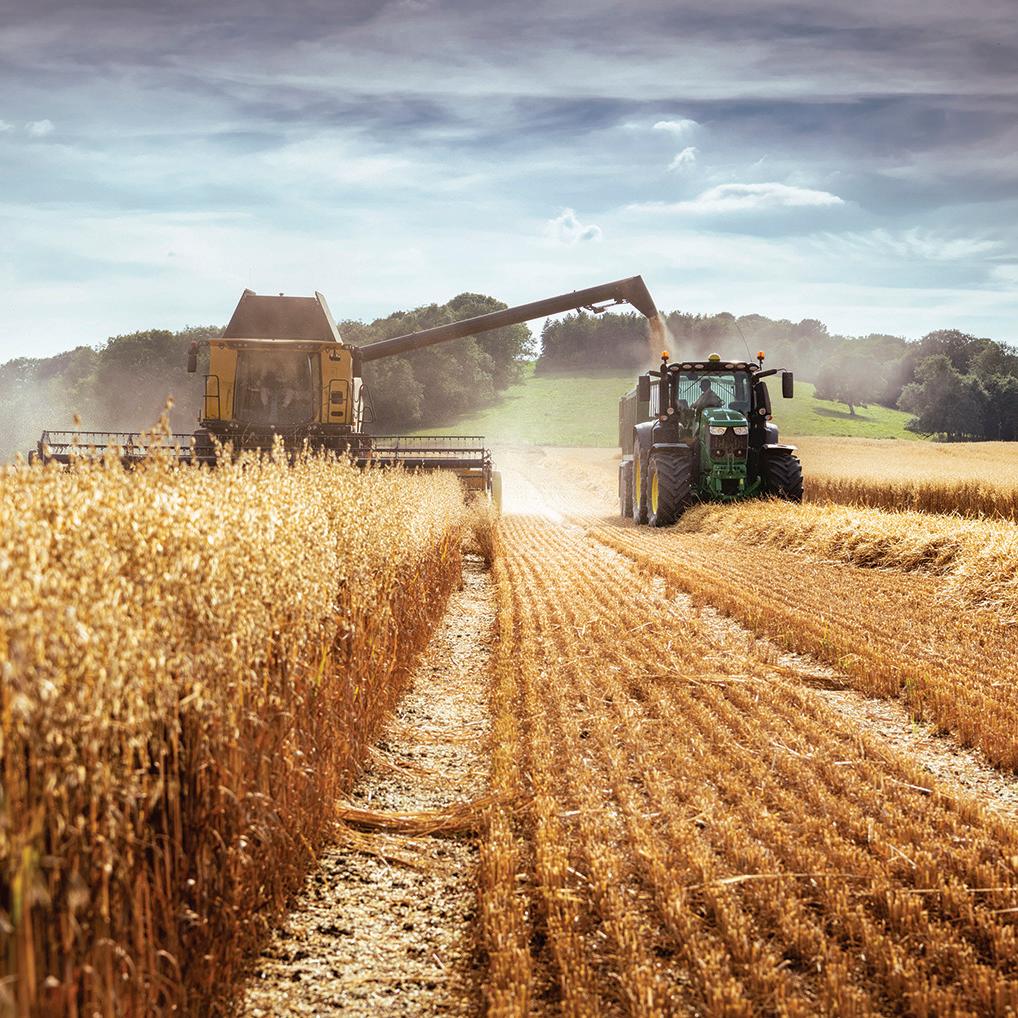






























Electricity is one of the vi-
By Teresa Young Special to the herald
tal aspects of life and work that many take for granted daily. But when things go awry, folks like Ricky Mason and the skilled workers at City Electric of Plainview can be your best friends.
A Plainview area native who graduated from Kress High School in 1978, Ricky has been involved with the electrical business since 1981. At the time, he worked for City Electric founder Eddie Sessions, who started the company in 1955. Ricky then purchased the business with Eddie’s daughter, Sue
Looney, in 1988 and the two worked together for many years. She recently retired.
City Electric offers basic electrical services for residential, commercial and industrial needs across the area. Jobs can include new construction at any level as well as repair work and updates for any kind of structure.
The company has a second office in Devine, Texas, near San Antonio, and offer the same basic services. The location was established to help serve the many stores owned by Lowe’s supermarkets, but the company enjoys working for that city’s residents much like they do in Plainview.
“We like to support both of our communities with our work and giving back to things that are supporting our area youth,” noted Ricky.
Between the two locations, City Electric has 32 total employees, and Ricky noted that the company likes to train local residents to the trade and raise up new employees that enjoy the smaller community environment.
The company also believes in good training for its workers so they are able to provide the very best service with peace of mind for customers regardless of the project. Ricky noted that City Electric is part of the national organization Independent Electrical Contractors and sends its
apprentices to their training school in Lubbock that Ricky himself attended in the early 1980s. Employees also get many on-thejob training hours under master electricians.
Pride in their work and service to longtime neighbors and friends keeps Ricky enjoying his work.
“It’s enjoyable to work for the same people and to meet new people and help them out. We are there for the good times like building a new home or barn or in the tough times when folks are dealing with a catastrophe,” he said. “I love driving around this town and pointing out all the things we have done. It’s grown from the very beginning but that is one of the coolest things.”
Another aspect of their work Ricky enjoys is serving area growers and other agriculture-related entities. City Electric often helps farmers with electrical work on irrigation systems and wells. They also serve ag-related businesses like grain elevators and others and work often for area dairies and feedlots.
“I grew up a farm boy and still have farm land, so that’s where my roots come from. I personally know the problems that our ag folks have sometimes; we can feel their pain and try to help them the best we can. We try to keep them safe at all times,” noted Ricky, who said he works with many second- and third-generation farmers.
“A lot of the things we touch may not be agriculture but everything in Hale County touches agriculture. Much of our work impacts agriculture in major ways, such as the banks. You can almost always find a way to tie it into agriculture,” he added.
City Electric has personnel on call 24 hours per day for assist customers in any situation. They are also equipped to handle various jobs, with bucket trucks and powered manlifts for higher jobs and ditching equipment for underground work.
City Electric is located at 4428 Olton Road and can be reached at (806) 2965111.

Plants often are only as strong as the soil in which they grow. While certain greenery may thrive no matter where it’s planted, soil conditions are often key to successful growing. Sodic soil is one condition people may experience at home or in commercial farming operations. Sodic soils, sometimes called saline-alkali soils or dispersive soils, are defined as having high levels of exchangeable sodium and low levels of total salts, according to the Colorado State University Extension. These conditions compromise growing conditions because sodic soils tend to be poorly drained and crust over. Water intake also can be poor in sodic soils, and pH is usually high and coming in above 9.0.
The Department of Primary Industries and Re-
gional Development of the Government of Western Australia advises a simple sodic soil test to check for sodicity. One can collect dry soil aggregates (crumbs of soil) from different depths. Those crumbs should be placed into a clear jar of distilled water, taking care not to mix or agitate the soil. The water around the edges of sodic soil will become cloudy and appear milky. For highly dispersive soil, the dispersion will be evident after about 10 to 30 minutes. Moderately sodic soil may take 2 hours. Individuals can take steps to improve sodic soil. Gypsum is the most commonly used amendment for sodic soil, according to Science Direct. It also can reduce the harmful effects of high-sodium irrigation waters. Gypsum is a mineral that is com-
posed of hydrated calcium sulfate. Gypsum has an effect on reducing the rate of soil erosion. It is more effective when gypsum is spread on the soil surface rather than mixed in.
Limestone, which also contains calcium, is another additive that can amend sodic soils. Gardeners may want to add calcium to the soil because it replaces the sodium and then the sodium can be leached out.
Additional mitigation methods for sodic soils include changing plant species or varieties to more tolerant ones that will grow more readily. Commercial farmers or home gardeners may encounter sodic soil. Though sodic soil is not ideal, it can be remedied in various ways.

The demand for food is directly related to population growth. By 2050, food needs are expected to double, according to a study published in the journal Agricultural Economics. That puts increasing pressure on the agricultural sector to meet growing demand. However, many experts think the industry will fall short. In addition to increased food demand, consumer habits, technology, and policies continue to force the agricultural industry to evolve. Indeed, the agricultural sector may look very different in the future.
Bigger digital footprint
Social media has transformed many industries, and it can do the same for agriculture. Farming supply chains can communicate with one another by getting feedback from customers in real time through social media. However, agricultural operations will have to devote teams to manage social media presence, especially since misinformation is so widespread on social media.
Apart from social media, local farmers may increase their efforts to
utilize mobile apps and direct-to-consumer purchasing options. The global pandemic helped businesses reimagine takeout and curbside shopping.
Local farms may want to market to the home-shopping community, providing ways to deliver produce, fresh meat and poultry and other items direct to customers’ homes.
The future may feature a significant shift in the way farms source their ingredients. Regeneration International says that regenerative agriculture can be the future. This describes farming and grazing practices that may help reverse climate change by rebuilding soil organic matter and restoring degraded
soil biodiversity. Some insist that farmers who utilize regenerative agriculture produce food that is more sustainable and healthy. This is something eco- and health-conscious consumers can stand behind.
Technological advancement
There’s a good chance that technology will continue to play important and
growing roles in farming operations. New agricultural technologies can collect data on soil and plant health and produce results in real time. Precision farming technology can be developed to deliver integrated solutions no matter the size of the operation.
Shift in what’s grown Farmers may give more thought to sustainable
products. Crops like hemp and cannabis are being utilized in new and innovative ways, and they’re only the start as consumers have expanded their views on plant-based foods and products.
While there s no way to see into the future, individuals can anticipate changes that could be in store for the agricultural sector in the decades ahead.








By Teresa Young Special to the herald
There was a time in Garrett Mathis’ life when he vowed he would not be returning to the family farm after he finished his education. But even during his college days at Texas Tech, he’d find himself back home for visits and on the tractor with his father, Mike, and grandfather Warren Mathis.
Garrett followed an undergraduate degree in agribusiness with an internship in Washington, D.C., helping work on the 2008 Farm Bill, then came back to Tech for a master’s degree in crop science. But the love of the
land pulled him back, and Garrett returned to the Providence area just east of Plainview to farm with his family.
While not unusual for generations to farm together, Garrett is somewhat of an anomaly in a day where many young people are opting for different careers eschewing the ever-challenging farming career. And his decision is monumental: Garrett is a sixth-generation farmer, working land that a few years ago was celebrated for being continuously operated by the same family for more than 100 years.
While the family started work on the land in 1905, today Garrett and Mike work land owned by both
Mike and his mother, Barbara Mathis, following the death of Warren in 2013. Barbara also owns one of the last family-owned grain elevators in the area, Providence Farm Supply.
“I’ve been farming with my family since I could walk,” says Garrett. “We have maybe 8,000 acres altogether and farm quite a bit of wheat and a good bit of cotton, but not as much milo or corn this year due to the prices. When we got some good moisture early we planted more cotton.”
Like most growers, the Mathises deal with the challenges of drought conditions and limited water supplies as well as rising costs of inputs. But they

rely on solid planning and processes that help them increase efficiency as much as possible. Fewer acres get watered, and drought-tolerant crops with micronutrients to combat heat are planted. “We try to get a plan but that can change depending on what the forecast and the prices are looking like,” Garrett said. “We do some crop rotation, cutting the stalks for grain sorghum and planting between the rows so it keeps from blowing in the spring wind. We also do minimum till and leave as much crop residue so it takes in moisture when it rains or snows.”
The Mathises cover all that ground with a small workforce, employing only four people besides Garrett and Mike. They rely heavily on technology and equipment that makes the operation more efficient, such as 48-row planters, tractors with auto-steer guidance and a dual stripper-baler machine they added in 2017. When it comes to grain production, Garrett said the fluctuation of commodity prices is the major deciding factor for how much is grown. The events in the Midwest – such as Ohio, Iowa and Illinois – as well as foreign countries in farming production all play a role in how prices settle. They may change crops or adjust the plant population to get more out of every drop of water that is spent.
“We are moving to where we spoon feed our crop
with nutrients rather than dumping it all at once. When it’s wet in the spring we try to use tissue sampling to know what the plant might need and give it a few shots through the sprinkler instead of fertilizing it all early on,”
Garrett said, adding that he follows several online farming group feeds to see what is working for others and what to avoid.
The technological advances, such as the auto-steer tractors, have made the rows more uniform and efficient. But they have also lessened the physical strain on farmers like Mathis, who noted that he finishes the day more relaxed and less tense since the tractor takes the bulk of the work.
But despite ongoing challenges, Garrett said the work come with a high reward.
“I love being able to go to work with my dad and do what I’ve known my whole life. You appreciate God’s creation a whole lot more,” he says, noting it also builds his prayer life.
“You have to have faith to farm. You can do all you can, but you have to pray for rain and for favorable crop prices, because all that is out of our control. My wife is a big prayer warrior, and she has a lot of people praying for us.
I don’t know how anyone can do this without faith in God.”
Garrett and wife Lindsie, an optometrist with Webb Vision Center, live in Plainview and stay involved in the community. Much
of that involves their four children: Evelyn, 14, Brody, 12, Collin, 9, and Kylie, 4. The children attend Plainview Classical Academy and their parents volunteer there and with the Hale County 4-H, where the Mathis children participate in a variety of areas. Garrett and Lindsie started a robotics project for 4-H members, in its third year of competition and growing in popularity. Beyond work and school, the family is active at First Baptist Church in Plainview, where Garrett is a deacon and sings in the choir. The couple helps with youth activities, and he was recently selected for the pastor search committee. Both are in the Plainview Lions Club as well, though Garrett says farm life doesn’t allow him to attend meetings as much as he would like.
As for the future of the family farm, Garrett said he’d love to see his kids join him in the work. But he’s not pushing them.
“I have taken the kids with me to the farm when I can and introduced them to that life. But I want them to do what they enjoy for a living. If they enjoy it, I’d love to work with them,” he said. “Mostly, I want them to appreciate a good day’s work and know how to problem solve and be good, productive, honest and God-fearing citizens.”


Since the World Health Organization declared a global pandemic in early 2020, businesses big and small have faced significant challenges. Though the pandemic has ended, many sectors, including the agricultural industry, are facing familiar and unfamiliar challenges.
The agricultural sector is crucial to the survival and health of billions of people across the globe. Though it’s obvious that modern agriculture is vital to feeding a global population that was greater than eight billion people at the dawn of 2024, the United Nations notes that
agriculture also boosts prosperity and economies by providing jobs. That reality only underscores the notion that the challenges facing the agricultural sector are facing everyone, even those whose livelihoods are not directly linked to the industry.
According to Earth.org, an organization that offers environmental news, data analysis, research, and policy solutions, the following are three sizable challenges facing modern agriculture.
1. Climate change: Perhaps no challenge is greater for humanity in the twenty-first century than
climate change, and the agricultural sector is no exception. Climate change has caused shifting weather patterns marked by unpredictability and potentially disastrous developments like prolonged drought. Estimates from NASA indicate corn yields may decrease by 24 percent by the end of this century, a potentially dangerous development linked to a host of factors, including a shifting climate and elevated surface carbon dioxide concentrations that can be traced to human-caused greenhouse gas emissions.
2. Population growth:
The booming global population is attributable to numerous factors, including longer life expectancies in developed nations due to medical advancements. How to keep the global population fed at a time when the climate is adversely affecting crop yields is a significant challenge facing both humanity and the agricultural sector. As the population grows, so, too, does the demand for water, which also must be used to grow crops. Navigating this challenge will be significant, and how it’s managed could affect the economic stability of the
agricultural industry in the decades to come.
3. Investment: Perhaps no industry is more vital to human survival than agriculture. Earth.org notes that countries with strong agricultural sectors often boast higher standards of living and health than nations with a less productive agricultural industry. Despite that, Earth.org notes that investment in the agricultural sector is not commensurate with the growing population. Supporting measures to invest more heavily in the agricultural sector could reduce food shortages in the decades to come and
ensure the agricultural sector is better positioned to address the many challenges it is already confronting in the twenty-first century.
The challenges facing the agricultural sector affect those who work in the industry but also the global population as a whole. Recognition of that reality may compel more people to support measures designed to ensure the agricultural sector can thrive and help the world to overcome potentially devastating challenges in the decades ahead.
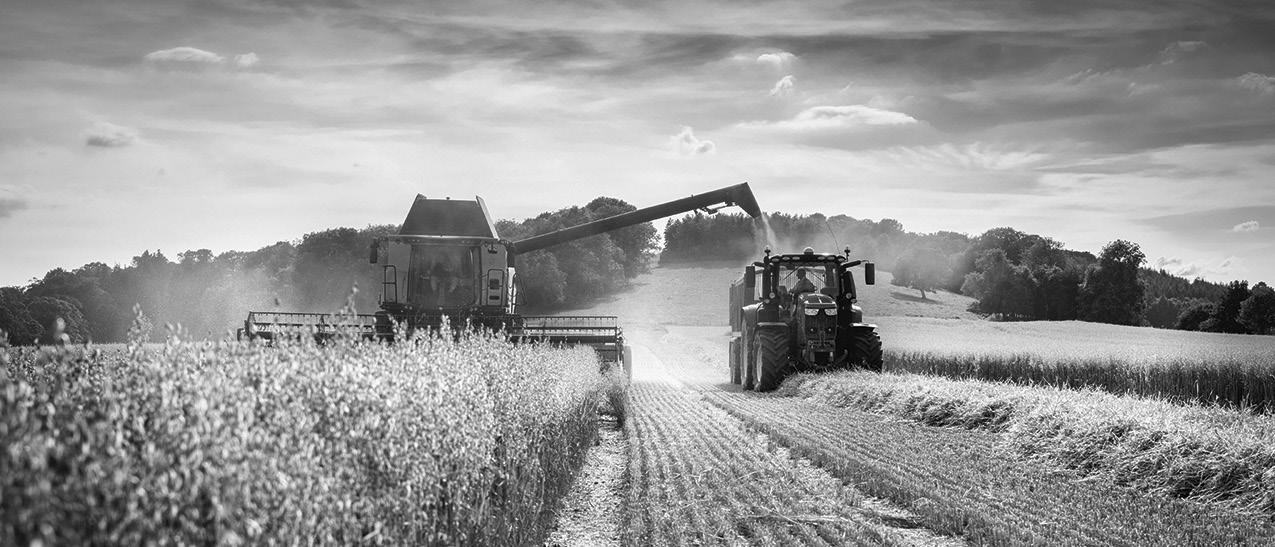






Does the idea of eating healthy make you think that you have to give up all of your favorite foods? While it is true that certain foods may not make the healthiest choices, substitutions can add nutritional value to some beloved yet traditionally unhealthy dishes.
The United States Department of Agriculture Dietary Guidelines for Americans emphasizes the need for people to reduce the amount of added sugar, sodium and fat they consume, all the while increasing fiber consumption. Subtle changes may make it possible to boost beneficial nutrients and reduce the caloric load of various dishes. Here are some substitutions to keep in mind when aspiring to eat healthier.
Original: Butter and oil
Swap: Applesauce,
mashed avocado or mashed banana
Plant-based alternatives can add moisture to baked goods without increasing saturated fat. Even swapping out a portion of the butter or oil with these alternatives can make the item healthier.
Original: Frying in fat
Swap: Different cooking methods
Baking, broiling, grilling, or roasting can produce delicious results. Many people utilize air fryers that employ convection to simulate frying without the need for all the oil frying requires.
Original: Sugar
Swap: Maple syrup or mashed dates
Many people think they need to give up on sweets when eating healthy. Sugar is an added ingredient in so many foods, so re-
ducing consumption can help. In addition to slashing the amount of sugar recommended for recipes, swap out sugar with maple syrup, honey or even mashed fruits. These are better options than refined sugars.
Original: Salt
Swap: Herbs and other spices
Omit half of the salt recommended in a recipe. Replace the salt with spices or herbs to add flavor. Nutritional yeast can add a salty umami flavor to many dishes and also provide additional nutrients.
Original: White rice
Swap: Brown rice, quinoa or couscous
Add additional fiber and/ or protein to dishes by swapping processed white rice with whole grains. Similarly, swap regular pastas with whole grain, and white bread with
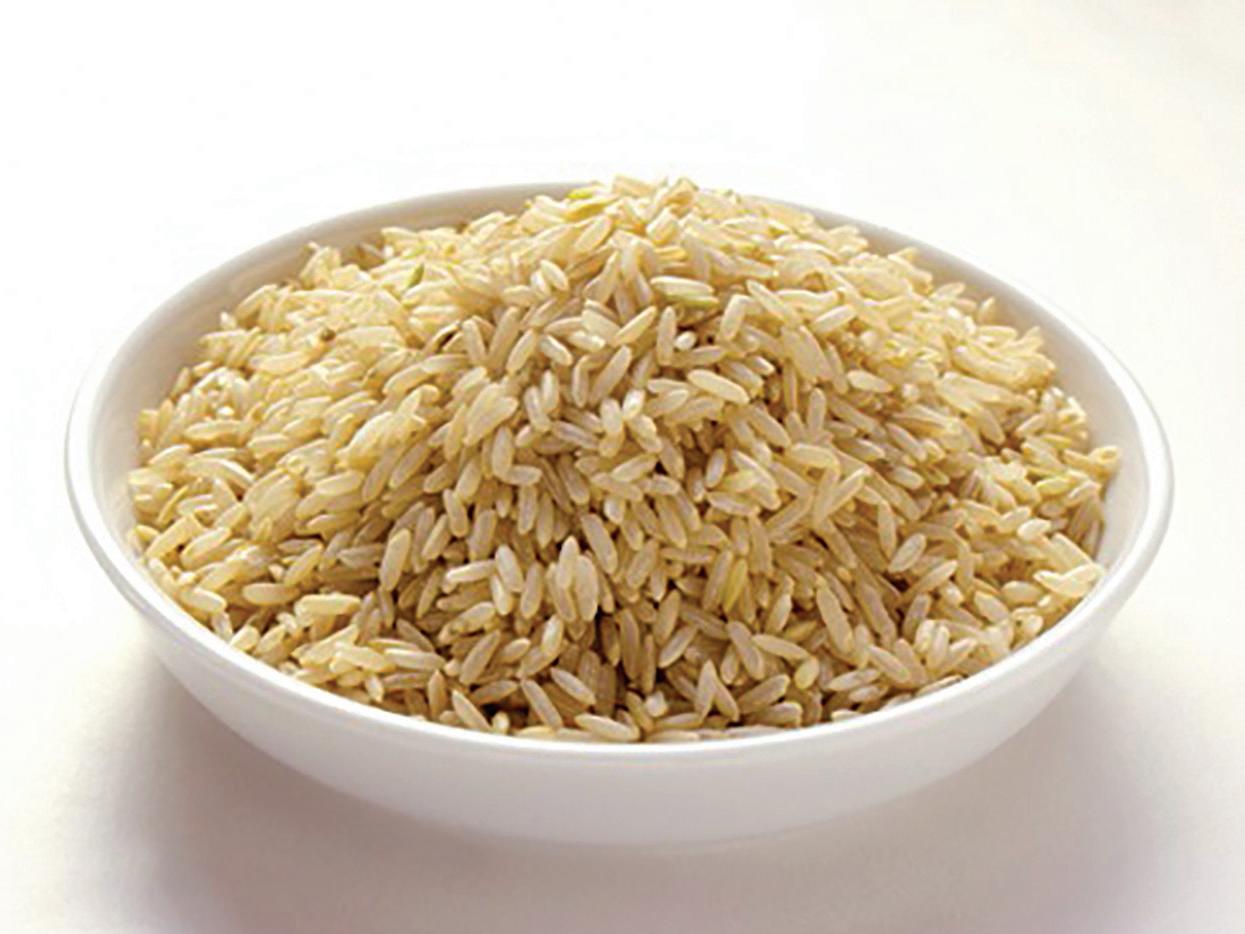
whole grain bread.
Original: Breadcrumbs
Swap: Almond meal or milled flaxseed
Breadcrumbs impart fla-
vor and texture, but they add calories with no nutritional value. Consider breading foods in almond meal or milled flaxseed to provide omega-3 fatty acids.
Substituting certain ingredients for others and embracing new food preparation techniques can add nutritional value to some beloved foods.
By Teresa Young
Special to the herald
As growers in the Cotton Center area, Stephanie and Aaron Kirby know how vital it is to have easy and quick access to parts and supplies that minimize down-time and keep their businesses at high efficiency.
So when they last of two parts stores in the small community was closing its doors, the Kirbys stepped in to fill the gap. That was 19 years ago, and Stephanie said the family
is proud that J&S Farms has been able to continue serving their friends and neighbors in the agricultural community.
“We wanted it to be something still offered to the community, and I was working in Lubbock at the time,” recalled Stephanie. “Running the store kept me closer to home and I was able to be with my kids who were still doing stock shows.”
Located at the corner of 179 and FM 37 in Cotton Center, J&S Farms is a farm supply store that sells filters, bolts, gloves
and parts including those for pivots and spray rigs. There are also related need such as bearings, seals, WD-40 and the likes. In addition, J&S builds hydraulic hoses for farmers in need of repairs. And the store is a great source for cold drinks, frozen sandwiches and snacks so customers can grab a bite while they break for supplies.
The Kirbys started their business by purchasing the inventory of former businesses and purchasing the property that was home to the former Allen and Beach Farm Store
and Fuel Supply. Stephanie manages the store primarily since Aaron is a full-time farmer with their adult son Kyle. The store has one other employee, Kara Stambaugh.
“I enjoy being able to offer this to our customers, to have it here so they don’t have to travel very far. We love getting to see everybody every day in the store,” noted Stephanie. “We have many regular customers, and we’ve known them all for so long. It’s good to be out and know what’s going on.”
Stephanie admittedly has a more personal connection to the small business since it serves a population that consistently faces challenges. She also lives that life with Aaron, a native of Cotton Center who farms on family land, raising wheat, cotton, milo and corn in the surrounding areas.
“The farm life can be tough. It is a struggle, and you see it every year since about 2011 with the droughts and the commodity prices. Expenses are up, and I’ve seen a lot of farmers go out of business and have to go work
in town,” she said. “I’ve always been pretty passionate about standing up for the farmers with people who don’t understand that lifestyle.”
“It takes a special person to farm. They are out there seven days a week most of the year. They work all the time, and the summer is not a break. The longer the sun is up, the later my husband works. It’s not for the weak,” she says. J&S Farms is open from 8 a.m. to noon and 1-5 p.m. Monday through Friday.

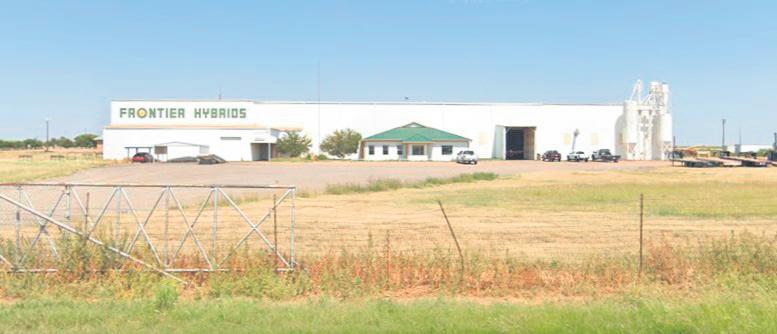







Things you may not know about rice Rice is a major component of cuisines spanning the globe. Rice is one of the most important commodities in the world and feeds more people than any other crop. In fact, it is a staple food, with the average American consuming 27 pounds of rice a year. However, the U.S. Rice Producers Association says that those in the United Arab Emirates consume the most rice at 450 pounds a year, followed closely by residents of Asia, who eat an average 300 pounds a year.
There is much to learn about this simple grain, so enjoy these rice facts, courtesy of Free Rice, Food & Wine, Think Rice, and Facts.net.
¥ Rice provides more than 15 vitamins and minerals and a host of beneficial antioxidants. ¥ A half-cup serving of rice comes in at around 100 calories.
¥ Rice in its natural form is “brown,” meaning it has three parts: a fibrous outer layer known as the germ; a middle layer called the bran; and a starchy center called the endosperm. The germ and bran of the
rice help it to be nutritionally dense, including high in fiber. Rice that has had the germ and bran stripped is known as white rice. White rice is more shelf-stable, but doesn’t offer the same nutritional benefits of brown rice.
¥ White rice offers some benefits. The carbohydrates in white rice provide energy to get through the day. Plus, white rice often is enriched, meaning some nutrients have been added back in. ¥ Cooked rice can spoil easily. It is best to always cook the right amount and then
promptly store leftovers in the refrigerator rather than leaving it at room temperature.
¥ The cultivation of rice dates back more than 9,000 years. There is evidence of rice farming found in ancient China, India and Southeast Asia.
¥ Research shows that eating rice can help a person feel fuller longer. So those who eat rice are less likely to be overweight.
¥ There are more than 120,000 varieties of rice. Most rice is affordable and readily available. Plus it is easy to prepare. ¥ Rice is
considered a sacred crop in Japan and is commonly used in traditional ceremonies. Rice also features prominently in Buddhist rituals in Thailand.
¥ Rice in its natural form is gluten-free. As a result, people with Celiac disease or those who have gluten sensitivities can include rice in their diets. ¥ Certain rices are sticky and others appear like loose grains. Amylose is the crystallized form of starch that prevents rice from sticking together after it is cooked. Basmati rice is one example of an amy-
lose-rich rice. On the other hand, sticky rice contains the highest amount of amylopectin and no amylose. Sticky rice is used to make signature sweet dishes in Asia.
¥ Rice is an annual plant and is harvested only once a year. Rice is very labor-intensive to grow and requires high amounts of water for cultivation. Rice is one of the most common foods consumed around the world and with good reason. It is nutritious, inexpensive and easy to add to any meal.













LUBBOCK, TEXAS (June 4, 2024)—National Sorghum Producers presented Michael Lenz and Larry Richardson with awards for Outstanding Achievement in Sorghum Improvement at the Sorghum Improvement Conference of North America. These awards, presented at the biennial gathering of the U.S. sorghum research community, acknowledge and honor their exemplary service and achievements in the sorghum industry.
Lenz’s career began fol-
lowing his graduation from Iowa State University in 1980, leading him to significant roles at several prominent companies in the sorghum industry. His innovative breeding strategies have significantly shaped the sorghum landscape, addressing critical issues such as greenbug biotypes and ergot. His work has led to the release of over 50 commercial hybrids under 25 unique sorghum brands, making a substantial impact on the U.S. sorghum industry.
“Not only can we contrib-
ute the release of many new commercial hybrids to Mike Lenz and his work with sorghum,” NSP CEO Tim Lust said, “but he also led the development of molecular markers for downy mildew resistance and eliminating tall offtypes in sorghum fields, which have set new standards for crop uniformity and disease resistance.”
The second award recipient, Larry Richardson, has dedicated his career to advancing the sorghum seed industry through his leadership at Richard-
son Seeds. Since his start in 1981, Richardson has steered the company to become a frontrunner in producing food-grade and ultra-short grain sorghum varieties. Richardson Seed was also one of the first companies to commercialize and promote BMR sorghum for silage as well as the grazing and hay markets.
“Richardson’s commitment extends beyond his company and work with the seed industry,” Lust said. “He has been a fervent leader through many
organizations, including the NSP board of directors, and his integrity and proactive leadership continue to influence industry standards and practices, earning him widespread respect and admiration across the sorghum industry.”
The award for Outstanding Achievement in Sorghum Improvement was first presented in 1961. Recipients include, among others, the forefathers of the modern hybrid sorghum industry. As of today, more than 60 individuals have received this award.
Visit SorghumGrowers. com/recognition to view past award recipients.
###
National Sorghum Producers represents U.S. sorghum producers and serves as the voice of the sorghum industry coast to coast through legislative and regulatory representation and education. To learn more about NSP, visit www. sorghumgrowers.com.
LUBBOCK, TEXAS (May 2, 2024)—The Texas Corn Producers, Texas Sorghum Producers and National Sorghum Producers have petitioned the Fifth Circuit for review of the fuel economy test procedures in the Environmental Protection Agency’s (EPA) new Multi-Pollutant Emissions Standards for Model Years 2027 and Later Light-Duty and Medium-Duty Vehicles.
The rule lays out EPA’s audacious electric vehicle mandate to which the agency expects automakers to respond by making 69% of new vehicles electric or plug-in hybrid by 2032. This move comes with a large price tag for Americans: some $870 billion in vehicle technology costs alone.
But buried inside the hundreds of pages the EPA takes to lay out the core of its electric vehicle mandate is a separate regulation setting fuel economy test procedures that arbitrarily and illegally penalize ethanol- and liquid-fu-
eled vehicles—which ultimately penalizes the corn and sorghum farmers who contribute to U.S. ethanol production.
Thanks to ethanol’s superior octane, E10 has been the standard gasoline blend for nearly two decades. But, until now, car manufacturers have continued to use E0 when certifying cars for compliance with national fuel economy and emission standards because of the way EPA penalizes vehicles tested on E10.
“EPA’s regulations are bad for ethanol and perpetuate the false narrative that cars are not suited to operate on E10 or E15, let alone on E20 or E30,”
TCP Executive Vice President David Gibson said. EPA proposed to update the test fuel years ago. A crucial part of this update is the R-factor, a number meant to adjust fuel economy for differences in the energy density of the test fuel. But EPA’s R-factor for E10 is based
on deeply flawed science and artificially lowers the fuel economy of cars tested on E10 instead of E0 as commentors, including the Texas Corn Producers, explained. EPA ignored these comments and finalized the rule anyway.
“The immediate effect of the new R-factor is to increase the stringency of national fuel economy standards, destroying demand for liquid fuels,”
NSP Past Chairman Kody Carson, a sorghum producer from Olton, Texas, said. “This R-factor also sets a dangerous precedent going forward. By penalizing car manufacturers for switching to a higher ethanol blend, EPA’s R-factor will dampen their incentive to certify cars designed for higher blends of ethanol, such as E20.
“EPA’s rule will destroy liquid fuel demand by at least 780 billion gallons by 2055. The unlawful R-factor pours salt in the wound. EPA hoped no one would notice when it

reintroduced these flawed procedures. We noticed.”
###
Texas Corn Producers advocates on behalf of the state’s corn farmers at both a state and national level. TCP’s mission is to be a trusted resource that resolves challenges and creates economic opportunities for Texas corn farmers. For more infor-

mation, visit www.TexasCorn.org.
Texas Sorghum Producers advocates for over 3,000 grain sorghum producers across the state of Texas on legislative, regulatory and industry affairs. Texas Sorghum represents farmers ranging all the way from South Texas and the Gulf Coastal Bend up to the High Plains in West Texas. For
more information, visit www.TexasSorghum.org
National Sorghum Producers represents U.S. sorghum producers and serves as the voice of the sorghum industry coast to coast through legislative and regulatory representation and education. To learn more about NSP, visit www. SorghumGrowers.com.


By Teresa Young Special to the herald
There is no shortage of financial institutions in the Plainview area, but one of the newest players in the arena feels they have an advantage.
“We try to pride ourselves on customer service,” said Monty Teeter, senior vice president and Lockney market president for West Texas National Bank.
“Banks offer mostly the same products, but the crew at West Texas National prides ourselves on
doing our best to serve the customer as best we can in whatever way that might be.”
Based in Midland, Texas, West Texas National expanded into Lockney in February 2024 and deals primarily with lending.
As a Lockney native and former farmer who has worked in banking locally since 2013, Teeter said he’s excited to serve customers and meet their lending needs.
West Texas National opened their Plainview branch in April 2024, and offers more of a full-service location. That means
they offer the standard checking and savings accounts, including a driveup window for customer convenience. They also have tellers and cash and can handle lending for many types of customers.
“Of course in this area, ag lending is a big part of what we do,” Teeter said.
“But certainly any kind of commercial and consumer lending is available too.”
Teeter also said the team of professionals working at West Texas National are familiar faces who have served the Plainview area for decades and want
to continue that tradition. Willis McCutcheon, a longtime banker, fills the role of Plainview market president and senior vice president. Nancy Stukey, who worked alongside McCutcheon for many years, is vice president of commercial lending. Longtime resident Christi Byrd is branch manager.
The bank was founded in the Permian Basin about 40 years ago and has several locations in the region. While there was one branch in Seminole that catered more to agricultural producers, Teeter said West Texas National
Bank’s expansion deeper into West Texas was a move to diversify more into the ag arena.
With a background in farming, Teeter said he and the rest of the West Texas National team are particularly excited about this aspect of their work.
“It’s good to work with those guys. Farming is tough, and they need a good bank to help them through that process. They’re great people to work with, hard workers, and it’s good to help those guys grow their business and improve their operations,” he said. “Our
Home gardeners and commercial agricultural enterprises are increasingly integrating more natural and sustainable practices into plant production. Although chemical pesticides and fertilizers can improve crop yields, chemicals can deteriorate soil efficiency and may affect the ecosystem in negative ways. In lieu of turning to a laundry list of products to help the soil, farmers and home gardeners may benefit from relying more heavily on the humble earthworm.
Earthworms are beneficial
According to CABI, an international, inter-governmental, not-for-profit organization that provides information and applies scientific expertise to solve problems in agriculture and the environment, earthworms are useful for the management of biodiversity. Earthworms are any gardener’s friend. These shy, light-sensitive creatures burrow through the soil, pulling leaves and other plant matter deep within. When the earthworms consume this detritus, the decomposed plants as well as the worms’ droppings provide nutrients to the soil.



Together with microbes, earthworms convert biodegradable materials and organic waste into nutrient-rich products. They also may help reduce instances of soil-borne diseases.
The benefits to worms do not end there. Earthworms also aerate the soil, enabling water to be absorbed, which helps develop strong plant roots. Earthworm burrows serve as channels where roots can elongate into deeper soil layers, enabling plants to grow more securely and deeply. This, in turn, can help reduce soil
erosion. While research is ongoing, there are some reports that the unique talents of earthworms can help convert land that is largely barren into fertile soil.
Breeding earthworms
It may be in gardeners’ and farmers’ best interests to raise earthworms. According to the science information site Sciencing, earthworms are hermaphrodites, meaning they have both male and female reproductive organs. Despite this, most worms need a partner to reproduce Ñ although

customer base has always been in ag production and we’re able to help those guys. And we focus on service since that’s important to them and to the everyday consumer. There’s no place to live like West Texas; we’re just nice to each other.”
West Texas National Bank is located at 3322 Olton Road at the corner of Ennis Street. They are open 8 a.m. to 5 p.m. in the drive-through and 9 a.m. to 4 p.m. in the lobby. In Lockney, the bank is open at 305 North Main Street from 9 a.m. to 4 p.m.
certain types will reproduce alone if partners are scarce. Worms can be purchased or found for breeding. A worm box, which can be made or bought from gardening shops, is a box made from untreated wood. The earthworms will need a temperature of at least 25 F, and dark, moist soil.
Place moistened paper scraps into one half of the worm box. Place the worms on top and give them opportunities to hide. Place small amounts of organic matter, such as kitchen scraps, coffee grounds and leaves, on
the paper layer every day. Leave the other side of the worm box empty, as this will be where the worm dropping compost will eventually collect. After two or three months, there will be quite a number of hatched worms to release into the garden along with the compost. Leave some worms behind to continue to reproduce.
Earthworms amend the soil in natural ways that can reduce the need to use chemical products and protect biodiversity.







By Teresa Young Special to the herald
It doesn’t take long for newcomers to Plainview and Hale County to realize that agriculture is the key aspect of the community. But it is also a foundational part of the area’s economy, says Kristi Aday.
“Plainview is obviously a very agriculture-dominated community and economy and has been for a very long time. It sort of comes and goes with water,” says Aday, director of the Plainview/Hale County Economic Development Corporation. “When we have good water, we have good crops and things work well. Of course, now with the droughts, water is being depleted, and that puts a strain on agriculture and the economy.”
True to their resilient nature, Aday says area growers have learned to pivot and diversify to cope with the difficult times due to
the water shortages that have such an impact on crops.
“One of the things we are seeing is farmers leasing land for solar farms. We are seeing more of those up in Kress and west of Plainview, and that’s an innovative use of their property and part of the emphasis on green energy,” she noted.
Aday also said growers are also adding cattle grazing to partner with the local dairies and allow them to add revenue without the worry of water sourcing. She said diversification is also happening to agriculture-adjacent businesses in the city.
One of the biggest boons to the city most recently is the addition of Korean-based DSM to the work at longterm producer Martin Industries, located out on the Dimmitt Highway. While Martin has been producing sulfuric acid for agriculture for many years, this new part-
nership is using the acid in computer chipmaking, adding jobs and revenue to the area.
“That is a totally different industry but tied to agriculture in some way.
That is important to our economy. They had a ribbon-cutting in late July and are already up and running,” noted Aday.
“They are planning their second plant already and negotiating for their third and fourth plants, all here in Plainview, Texas.”
She said modernization in both agriculture and ag-related businesses is also causing expansion.
One example is longtime business entity Browning Seed, who has added drones to their operation to monitor farms. And other ag technology companies are helping farmers using new techniques and tools to improve outputs.
And while some may not include dairies in the ag world, they are a big part



of the Hale County economy with large numbers of employees, adjacent businesses that support the industry and partnerships with area growers for forage crops. Plus, dairy owners and operators live and shop in Plainview and that benefits the entire area.
Aday also mentioned that White Energy, located on Highway 70 toward Floydada, has potential to grow their output and impact the community as well.
“They bring in corn from all over the country and make ethanol out of it. Those process are lending themselves to more green energy. There are a couple of companies talking to White about taking their byproducts from agriculture use to make green energy products like jet fuel,” Aday noted. “It’s been interesting to see the offshoots of these and how people are being very innovative.”
And while there are many ag-related businesses in the city already, Aday said the EDC is always courting more businesses in this realm since it seems to be a natural fit and readymade customer base. While it is a challenge to compete with the bigger Texas cities, she said West Texas is stepping up to sell itself as a worthwhile option to consider.
“We get leads on agriculture-type businesses wanting to move into Texas, and we send them information trying to sell them on Plainview and our agricultural area and how we can be a good fit here. We have seen hydroponics vegetable growing, agriculture tech and agriculture implements most recently,” she said. “We’re trying to land all these businesses that I call agriculture-adjacent. There are definitely still businesses looking to locate in areas of high agriculture for suppliers to the industry.”
While the water supply is a concern to growers and others, Aday noted the city is working hard to get ahead of those challenges. Plainview adopted a longrange water plan in the past few years and is reviewing all its water sources and well and planning for future wells for the coming decades.
“The efforts the city is undergoing to put in new water meters is our first step in making people aware of how much water they use so they can watch their own usage and manage that themselves,” she explained. “It’s just one piece, but awareness is always the first step, and these meters will be more accurate and efficient.”
Aday noted the city is also working on an aqua storage and recovery plan, or ASR, that will investigate new types of water storage to preserve water currently being purchased to eliminate any waste.
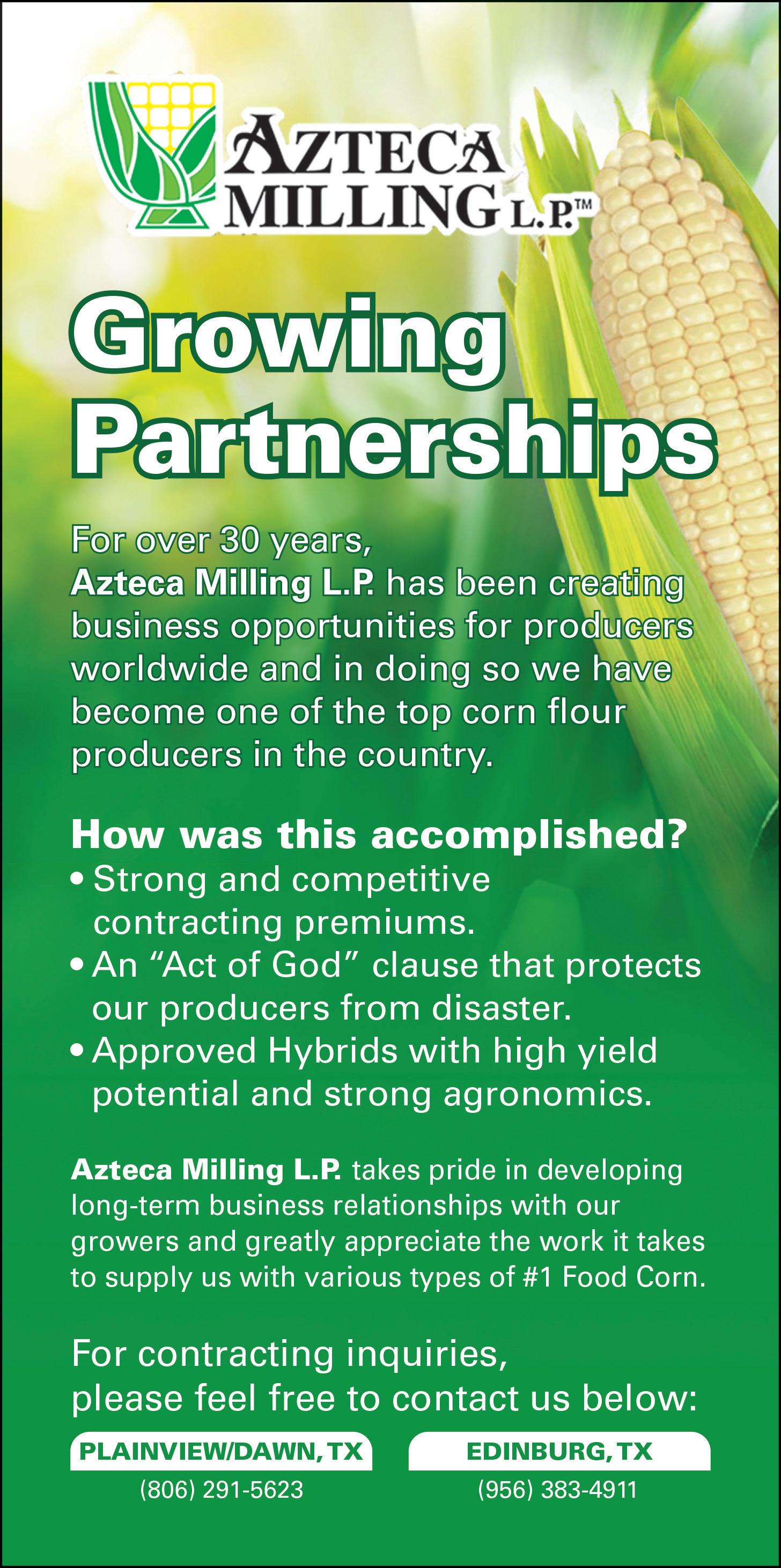
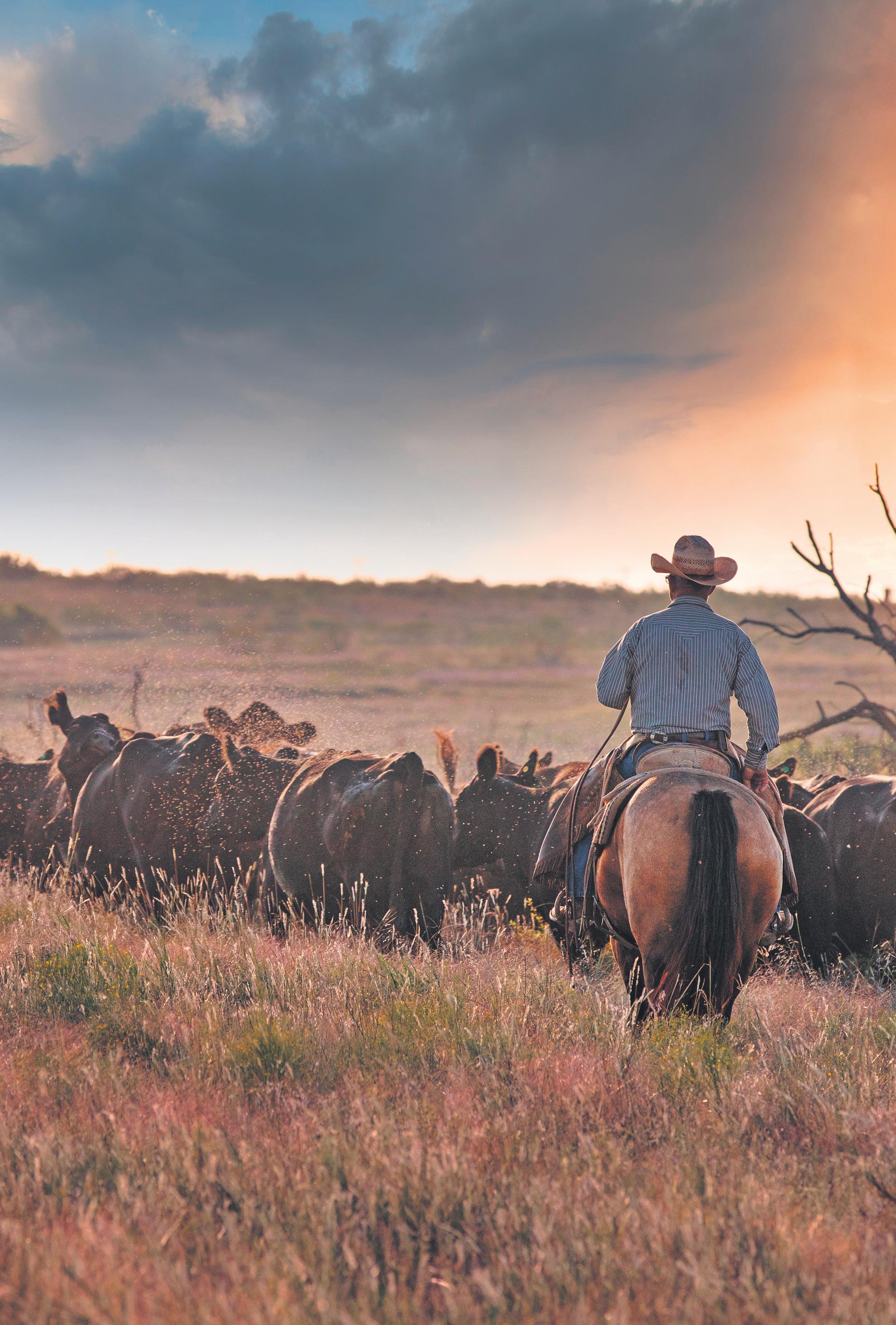
Wi th de ep Tex as root s , we’ ve ser ve d our customer s and communi tie s wi th inte gri t y and excellence for 1 20 year s We do the right thing A nd we pu t you f ir st That ’s w hy no matter the season , our lender s are read y to help provide you wi th reliable ag lending solu tions .
Visi t wi th our team today!

